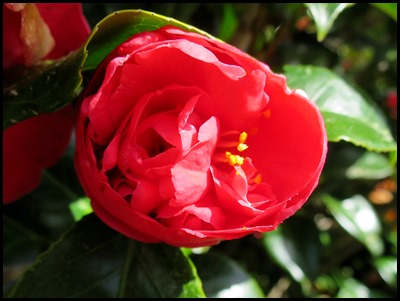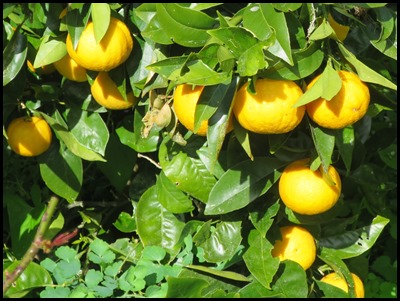Eel Feeding

|
We Stopped to Feed the Tame Eels 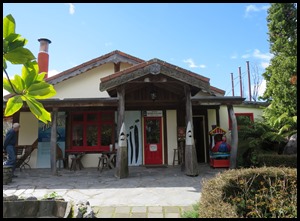 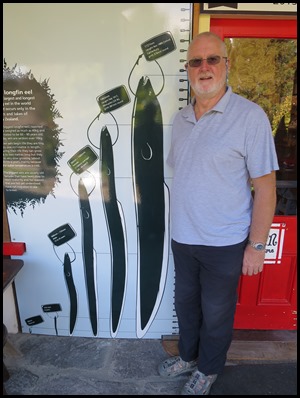 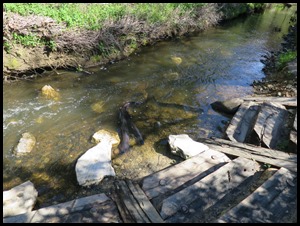 Back in Tonga we wanted to feed the sacred
eels. Arriving at their known spot we could see them but the shop was closed so
we couldn’t buy them any feed, being in a rental car we had no bread or tuna
with us......Ooooo. Today we saw a sign for ‘Tame Eels’, turned off the main
road and stopped at the Jester Cafe, winner of the NZ
Cafe of the Year 2013/2014. We read the information boards and as usual, Bear posed for sizing purposes. We spent a pound each and
went off with our diddy pot of raw chicken bits and a lolly stick. Armed we were
ready this time.... off down the steps to the little stream, we could see our
soon-to-be-new-friends awaiting us, licking their lips.
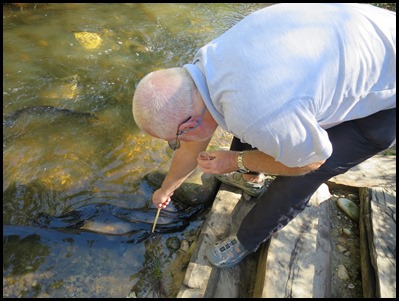 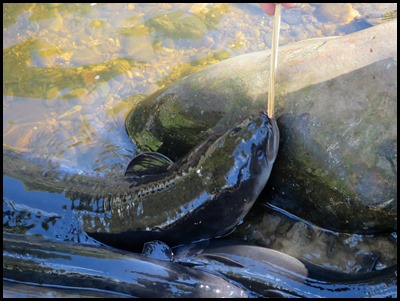 Bear soon got into the
swing of things but commented that their mouths
are very raspy, like sandpaper.
The longfin eel is found only in New Zealand. Travelling far inland, it may be the country’s most widely distributed freshwater fish. The pectoral (side) fins have sixteen to twenty bony rays. This species is usually dark brown to grey-black on the back. One study found that males swim out to sea to breed and die at an average age of twenty three years and females at an average age of thirty four. Growth rates are slow. Longfin eels grow at around two and a half centimetres a year to a length of thirty centimetres, and they slow down to only one and a half centimetres a year to a length of one metre. Shortfin eels grow a little faster. These slow rates are a result of temperature, food supply and competition. They are probably the world’s biggest eels. They may grow up to two metres, and the biggest caught and measured so far weighed twenty four kilograms taken from Lake Waihola, south of Dunedin in 1974. Any New Zealand eel over one metre long and caught inland is probably a longfin specimen. In 1882 Canterbury naturalist T.H. Potts listed some unsubstantiated reports of impressive catches, including a forty three kilogram eel caught by a shepherd at Stoneyhurst, and eels over fifty nine kilos from Lake Wakatipu ??? 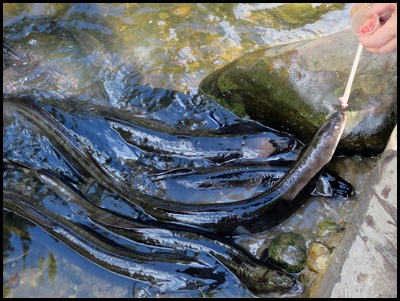 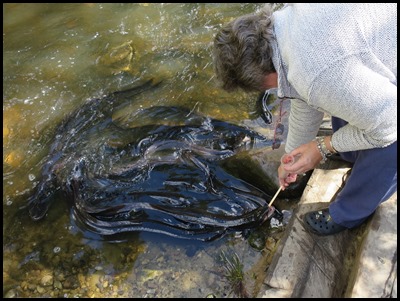 I tried to single out
the smaller ones but did manage to tick the big ones off a
bit.
Eels were important food for the Māori, and it took effort and ingenuity to catch them. Traps, nets and other devices were often complex and sophisticated. In the 19th and 20th centuries, many New Zealand children went eeling, and catching one was almost a rite of passage.  The sign on the cafe wall shows a tuna –
the Māori name for these eels, packed ready to go on
holiday.
Longfin eels breed just once at the end of
their life. When they are ready to breed they leave New Zealand and swim 5000
kilometres up into the Tropical Pacific to spawn, probably in the deep ocean
trenches somewhere near Tonga. The female lay
between one and twenty million of eggs that are fertilised by the male, all a
bit of a mystery. The eggs then develop into larvae called leptocephalus and
look nothing like an eel. They are transparent, flat and leaf shaped. The larvae
reach New Zealand by drifting on ocean currents, and probably with some
directional swimming. When they enter the rivers
the leptocephalus change into more of an eel shape but are transparent. These
are called glass eels. Glass eels move from salt
water to fresh water between July and November each year, often in very large
numbers. Whitebaiters sometimes find them in their nets as a
by-catch.
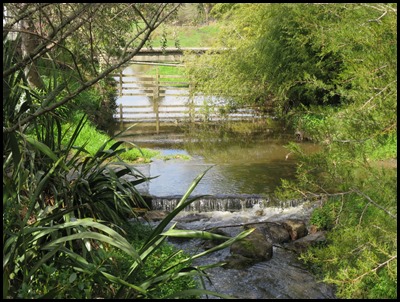  After we had fed our new friends we looked
upstream and found a lovely lily plant.
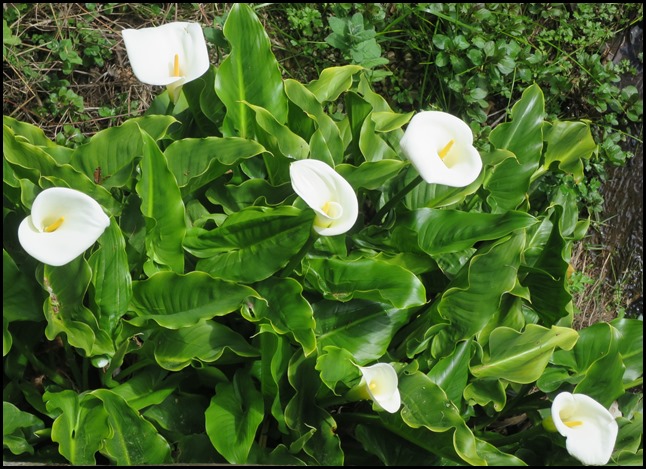 All the blooms quite
perfect.
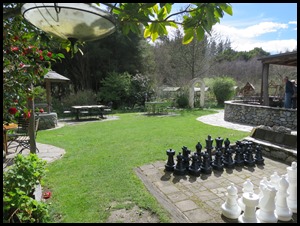 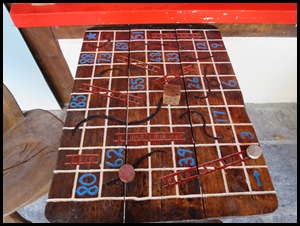 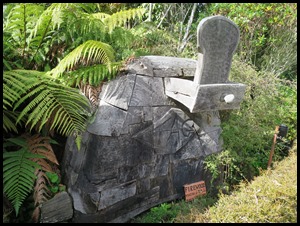 Walking through the garden of the cafe,
there was a chess set, a game of eels and ladders – we refrained from buying each other an
eel t-shirt and a massive wooden
toaster.
Wonderful splashes of
colour.
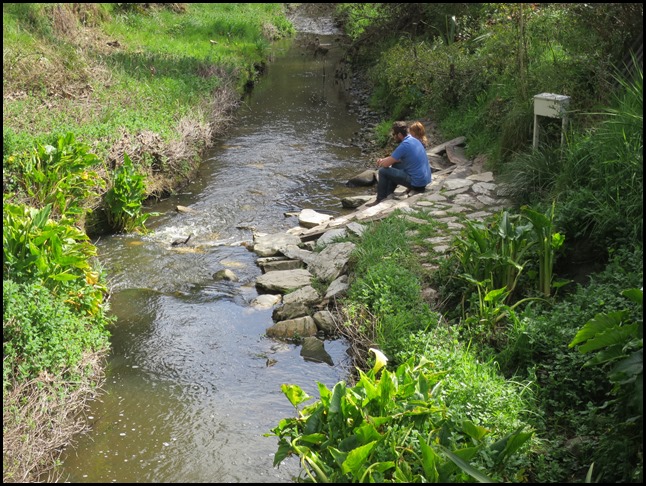 We left our friends to new admirers and bimbled back to Mabel, an eel acting as
a parking line.
 ALL IN ALL A MUCH AWAITED
EXPERIENCE
VERY STRANGE RASPY
CHAPS |
